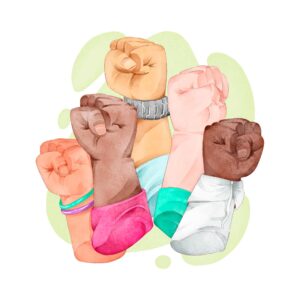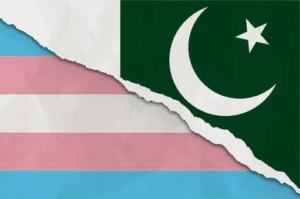In the dynamic realm of transgender rights, Pakistan has carved its narrative with a legislative milestone—the Transgender Persons (Protection of Rights) Act of 2018.
The driving force behind this transformative legislation was Senator Babar Awan, whose vision echoed a multifaceted approach involving collaboration from various stakeholders. Feminist groups, civil society organizations, political entities, and international organizations such as the UNDP and the National Commission for Human Rights played pivotal roles in shaping the contours of this groundbreaking legislation.
Within Pakistan’s constitutional framework, the threads of equality and non-discrimination are intricately woven into Articles 4, 9, 25, 26, and 27 of the Constitution of Pakistan, 1973. These constitutional provisions form the cornerstone of a just and equitable society, affirming every individual’s inherent right to be treated fairly, regardless of gender or any other distinguishing factor. Rooted in the principle that no one shall be deprived of life, liberty, or subjected to discrimination, these articles lay the foundation for a nation where the law stands as an unwavering guardian of equal rights.
However, the journey towards the fulfillment of these constitutional promises has been complex, particularly for transgender individuals. In the face of systemic challenges and societal biases, the constitutional safeguards often seem like distant aspirations rather than immediate assurances for this marginalized community. Yet, a glimmer of hope emerged in 2012 when the Supreme Court of Pakistan issued pivotal rulings, recognizing transgender persons as the third gender and affirming their equal voting rights.

Constitutional Provisions
Article 4 – Right to Be Treated in Accordance with Law:
This article emphasizes that every individual has the right to be treated in accordance with the law. It sets the framework for equal treatment and protection under the legal system.
Article 9 – Right to Life and Liberty:
This article states that no one shall be deprived of life or liberty except in accordance with the law. This fundamental right ensures the protection of individuals’ lives and personal freedom.
Article 25 – Equality of Citizens:
This article declares that all citizens are equal before the law and are entitled to equal protection of the law. This provision reinforces the principle of equality and nondiscrimination.
Article 26 – Non-Discrimination on the Basis of Sex:
This article prohibits discrimination on the basis of sex. It underscores the commitment to gender equality and the prevention of discriminatory practices.
Article 27 – Safeguards Against Discrimination in Services:
It prohibits discrimination on the grounds of sex in services under the State. It reinforces the commitment to equal treatment in various domains.

Supreme Court Rulings (2012):
Recognition of Transgender Persons as the Third Gender:
The Supreme Court of Pakistan, in a historic ruling in 2012, recognized transgender individuals as the third gender class. This acknowledgment was significant as it affirmed the existence and rights of transgender people, recognizing them as a distinct and equal category.
Equal Voting Rights:
The ruling ensured that transgender individuals were considered ‘equal’ voters, guaranteeing them all constitutional rights. This recognition aimed to address the marginalization and discrimination faced by the transgender community. Before the landmark Transgender Persons (Protection of Rights) Act of 2018 in Pakistan, transgender individuals faced widespread discrimination, marginalization, and lack of legal recognition
The legal and societal landscape was challenging, and the transgender community was often subjected to violence, harassment, and systemic neglect. Here are some key aspects of the situation before 2018:
Lack of Legal Recognition:
1. No Legal Protections:
- Before 2018, there were no specific legal protections or rights afforded to transgender individuals in Pakistan.
- The absence of legal recognition often led to social and economic exclusion, limiting opportunities for education, employment, and healthcare.
2. Challenges in Documentation:
- Transgender individuals faced difficulties obtaining accurate identification documents reflecting their gender identity.
- The lack of proper documentation hindered access to essential services and contributed to their vulnerability.
Societal Stigma and Discrimination:
1. Social Stigma:
- The transgender community faced deep-rooted societal stigma, leading to discrimination, ostracization, and exclusion from various aspects of life.
- Family rejection and societal prejudices often forced transgender individuals into marginalized and vulnerable positions.
2. Violence and Harassment:
- Transgender individuals were disproportionately targeted for violence and harassment.
- Hate crimes, physical assaults, and verbal abuse were rampant, and victims often faced challenges seeking justice due to a lack of legal recourse.
Activism and Advocacy:
1. Emergence of Advocacy Groups:
- Despite the challenges, some transgender activists and allies began to raise their voices to demand recognition, rights, and an end to discrimination.
- Transgender individuals, such as activists like Kami Sid, started playing a pivotal role in advocating for change.
2. Lack of Comprehensive Legal Framework:
- While there were sporadic efforts to address transgender rights, a comprehensive legal framework that explicitly protected the rights of transgender persons was lacking.
Changing Dynamics Post-2018:
1. Legal Recognition:
- The Transgender Persons (Protection of Rights) Act of 2018 marked a significant turning point by recognizing the rights of transgender individuals and providing legal protections.
2. Increased Visibility:
- The legal changes contributed to increased visibility and awareness of transgender rights in Pakistan.
Transgender Persons (Protection of Rights) Act of 2018

The Transgender Persons (Protection of Rights) Act of 2018 in Pakistan is a landmark legislation that aimed to recognize and protect the rights of transgender individuals. Here are more details about the key provisions and implications of the Act:
Key Provisions:
1. Right to Self-Identification:
One of the significant aspects of the Act is the recognition of the right of transgender individuals to self-identify their gender. This means that individuals have the autonomy to determine and express their own gender identity
2. Non-Discrimination:
The Act prohibits discrimination against transgender persons in various areas, including employment, education, healthcare, and access to public spaces. This provision is crucial for addressing systemic discrimination and promoting equal opportunities.
3. Safe Spaces:
The legislation mandates the establishment of safe spaces for transgender individuals. These spaces are intended to provide protection from harassment and violence and to offer medical and educational facilities.
4. Educational and Employment Opportunities:
The Act envisions measures to facilitate transgender persons in their pursuit of education and employment. This includes taking steps to ensure that they have equal opportunities in educational institutions and workplaces.
5. Healthcare Access:
Recognizing the specific healthcare needs of transgender individuals, the Act emphasizes access to healthcare services without discrimination. This includes gender-affirming healthcare and other necessary medical facilities.
6. Legal Recognition:
The legislation addresses issues related to legal recognition by allowing transgender individuals to obtain identification documents that reflect their self-identified gender. This provision is crucial for ensuring that transgender individuals can access services and participate fully in society.

Implementation Challenges:
1. Documentation Hurdles:
- Despite the legal recognition provisions, there have been reported challenges in the implementation, with some transgender individuals facing obstacles in obtaining accurate identification documents.
2. Societal Attitudes:
- Changing societal attitudes and overcoming deep-rooted prejudices remain ongoing challenges. The Act seeks to address discrimination, but cultural shifts may take time.
3. Access to Safe Spaces:
- Implementation challenges may exist in creating safe spaces, and the effectiveness of these spaces in protecting transgender individuals may depend on local contexts.
Advocacy and Impact:
The legislation has contributed to increased visibility and awareness of transgender rights in Pakistan. Transgender activists and advocacy groups continue to play a crucial role in ensuring the effective implementation of the Act and advocating for further improvements.
The Transgender Persons (Protection of Rights) Act of 2018 represents a crucial step toward recognizing and protecting the rights of transgender individuals in Pakistan. However, ongoing efforts are essential to address implementation challenges, societal attitudes, and ensure the full realization of the rights envisaged by the legislation.
















